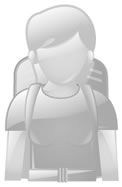Advertisement
Published: February 23rd 2008
February 16 2008
Our overnight return from Genovesa Island put us on the northeast coast of Santiago Island, in Sullivan Bay. Sullivan Bay (named after an officer on Darwin’s ship “Beagle”) sits between Santiago Island and Bartolome Island. Santiago Island is interesting because it has had a relatively recent eruption, only 110 years ago. In fact, the eruption happened after Darwin visited the island, so his observations pre-date a very large change to the island’s geography and animal inhabitation. The recent lava flows were on top of a much more ancient volcanic base, and are visibly different by being near-black on top of the reddish-brown base. This island was most interesting for the geography of the lava flows, the intricate squiggles, cracks, and designs of the liquid lava as it solidified. After 110 years, life is starting to return to the flows, with occasional tufts of grass and cactus growing in the cracks.
One of the interesting bits of history of this island was the impact of man’s presence. At some point in the 19th century, someone set 4 goats free on the island. Without predators, they multiplied to the point where there were over 100,000 of them in

 Galapagos Penguin
Galapagos Penguin
Sullivan Bay, Santiago Island, Galapagosthe 20th century. Add to this a feral pig population, and the island had nearly been destroyed of much of its vegetation. The government set about to kill off the introduced animals, starting in the early 1970’s, it took nearly 30 years to get them all.
There is a Galapagos Penguin population on this island, and we saw one from the boat first thing in the morning (excuse the poor picture, it was at maximum zoom, hand-held on a moving boat). Viewing penguins is not always easy because they leave the land early in the day to find food, and spend the day at sea, not returning to land until after dark.
Darwin’s notes on Santiago Island noted a large marine iguana population, but they are apparently not as evident since the most recent eruption. We had a dry landing on a lava flow extending into the ocean, and left our gear on a small sandy beach where we would return later to snorkel.
We followed a laid-out path through the lava field in a large loop that eventually brought us back to the bay. It gave us a chance to see all manner of strange formations

 Going Ashore
Going Ashore
Sullivan Bay, Santiago Island, Galapagosof lava, as you can see in the attached photos.
After about an hour and a half walking on the lava flows, we returned to the beach, and went snorkelling for an hour or so. It was very interesting swimming along the leading edge of the flows where they joined the water. Lots of aquatic life, and beautiful fishes. Then a few penguins joined us. Curiously, they roared around the area where we were, occasionally sticking their heads out of the water to look at us. As I was in the water, I did not have my camera to record any of it. Penguins, and later the flightless cormorants on Fernandina Island were some of the highlights of my trip.
After snorkelling, we returned to the ship for lunch and siesta.
In the afternoon, we went to Bartolome Island across the bay. We had to climb over a few sea lions that had occupied the steps up from the beach. A wooden walkway took us to the high-point on the island where a post-card view of Sullivan Bay, Pinnacle Rock, and Bartolome’s interesting shoreline was available. The raised wooden walkway is to protect the many Lava Lizards

 Lava flow
Lava flow
Santiago Island, Galapagosthat make their home on the island. We spent the night in the protected waters of Sullivan Bay, getting under way at 4:30 AM for a two-hour cruise to Rabida Island.
Advertisement
Tot: 0.04s; Tpl: 0.012s; cc: 6; qc: 24; dbt: 0.0197s; 1; m:domysql w:travelblog (10.17.0.13); sld: 1;
; mem: 1mb



















Melinda
non-member comment
Wow
Unreal! Such unfamiliar landscape to me! It's so amazing. I'm so glad you were able to see this!